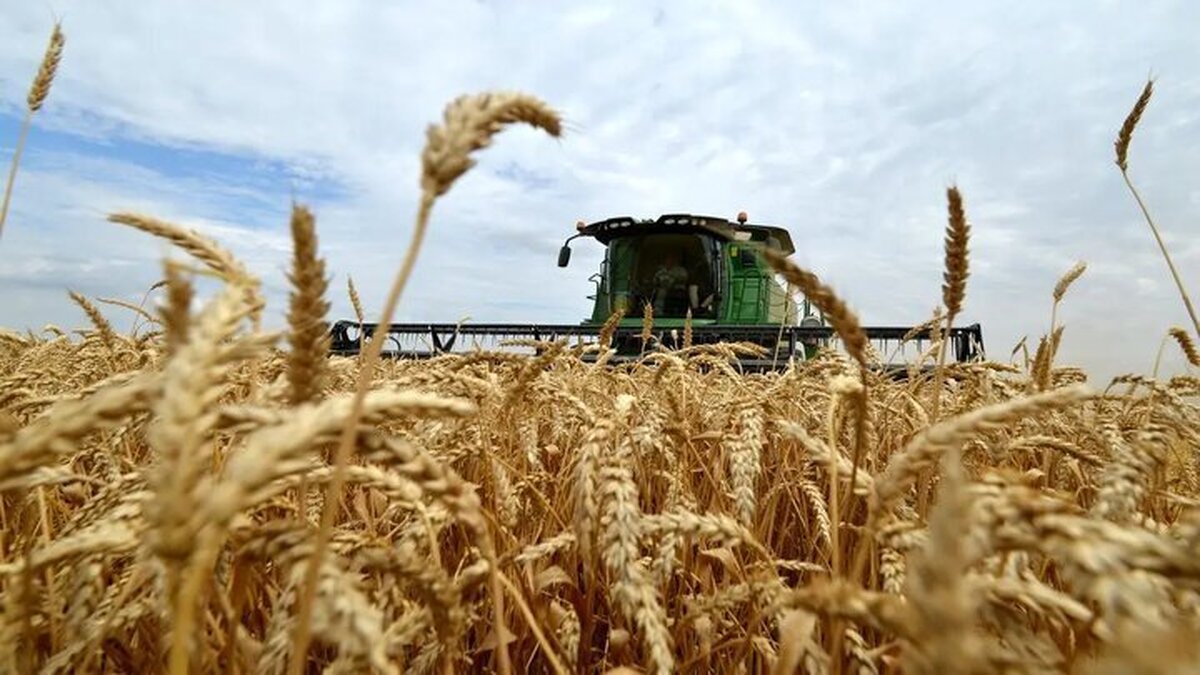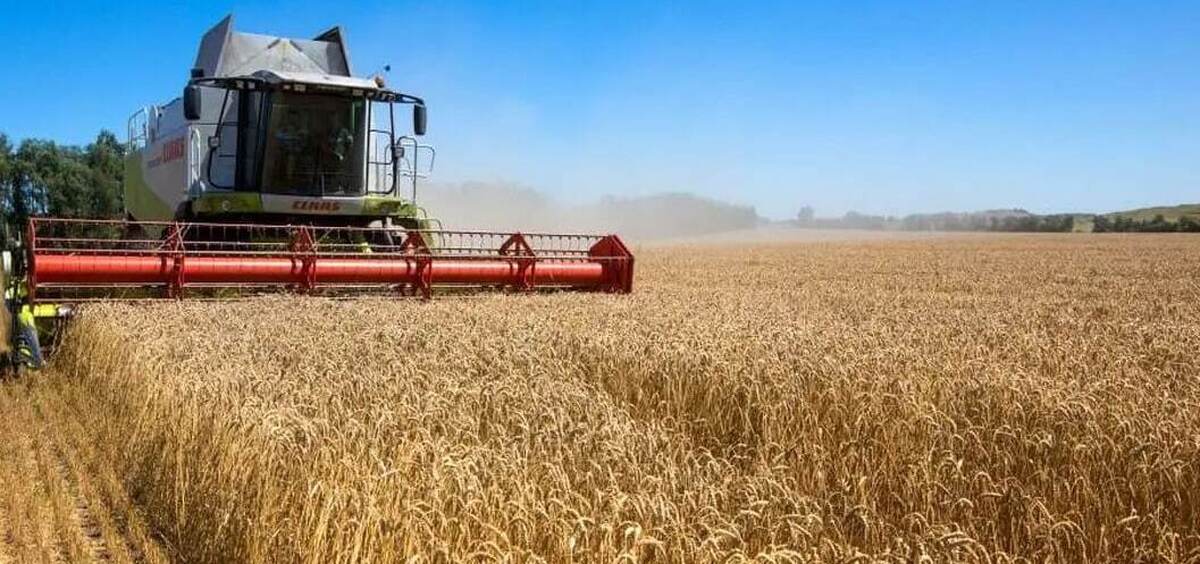
Iran Pressing Ahead With Agricultural Outsourcing
EghtesadOnline: Iran’s geographical location on dry latitudes, its drastically changing climate, low precipitation levels (a third of global average), drought, high water consumption, diminishing water resources, soil degradation and low agricultural productivity are making it necessary for the country to take agricultural outsourcing more seriously to ensure food security and protect its vulnerable environment, says the manager of Agriculture Ministry’s “Farming Beyond Borders” program.
“In the next [fiscal] year’s budget bill [March 2022-23], the government has given priority to the import of agricultural crops cultivated in foreign countries under the ‘Farming Beyond Borders’ program rather than crops simply imported by traders,” Mohsen Shaterzadeh was also quoted as saying by the news portal of Iran Chamber of Commerce, Industries, Mines and Agriculture.
Agro outsourcing involves the practice of purchasing, renting or leasing by one country of another country’s arable land for the cultivation of agricultural products. These products could be marketed in the active country, or alternatively exported to other destinations by the same country. This process ensures food security and boosts agricultural production.
Gov’t Bodies, Conditions Involved
The official noted that based on what the Cabinet ratified in 2016, the ministries of agriculture, foreign affairs, cooperatives and economy, as well as the Central Bank of Iran, are responsible for implementing the program.
“Starting the same year, the Agriculture Ministry took the required measures and Iran officially started cultivation in Kazakhstan, Ukraine, Ghana, Azerbaijan and a few other countries. In the April of 2018, CBI ratified for Iranian companies active in the scheme to be allotted currency available at the Secondary Foreign Exchange Market rates, known locally as Nima,” he said.
“The Economy Ministry was given the permission to use resources from Iran Foreign Investments Company and the National Development Fund of Iran to grant financial facilities for this purpose as well as for joint investments.”
Nima is an online platform affiliated to the Central Bank of Iran where exporters sell their overseas currency income and companies buy it for importing goods, machinery, equipment and raw materials. Foreign currencies in the secondary market is provided at rates lower than free market prices.
Yet, since the concerned official bodies found it difficult to verify the undertakers of the plan on the land purchased and their production costs, they received no foreign currency during these years.
Shaterzadeh said that last year, the Agriculture Ministry decided to make its policies clear regarding agro outsourcing and communicated the outlines it had set to responsible bodies and companies in December 2020.
“It first singled out the crops, the cultivation of which would be supported as part of the scheme, such as corn, soybeans, barley and oilseeds [colza and sunflower]. Our imports of these five commodities are at 15 million tons per year. Some 10 million of the figure pertain to corn,” he said.
“Within the next 10 years, demand for these crops will exceed 27 million tons. If everything goes as planned, we will be able to produce around 15 million tons of these products domestically. The remaining 12 million tons have to be imported, costing the country billions of dollars. We have no choice other than to embark upon and expand our beyond border cultivation plans.”
The third policy, according to Shaterzadeh, is to support agro outsourcing through the government’s guaranteed purchase plans, contract-based cultivation, or forward purchase agreements.
“Agreements have been signed with producers before the cultivation season begins and their goods are supplied within two months of the harvest to Iran’s customs terminals. The Agriculture Ministry will pay in foreign currencies supplied by CBI and NDFI,” he said.
“The last policy we have put in place is that consignments of imported crops produced as part of the scheme have to weigh at least 50,000 tons, otherwise no contract will be signed with producers. This means that companies who want to enjoy government support must have at least 15,000 hectares of irrigated land or 30,000 hectares of rain-fed land abroad to be able to meet this limit.”
Shaterzadeh also said that last year these policies were communicated to different companies and organizations, and so far, seven companies who own lands as big as 50,000 hectares to 1 million hectares abroad have submitted applications to the ministry that is in the final stage of signing contracts with them.
“Twenty companies are also waiting for their qualifications to be confirmed. Most of these companies have lands or are willing to conduct agro outsourcing in Russia, Kazakhstan, Ukraine, Brazil, Azerbaijan, the Ivory Coast, Ghana and Madagascar. We in the Agriculture Ministry also advise companies to consider Argentina and Venezuela for this purpose. Precipitation in these countries is 10 times more than in Iran and cultivation procedures are cheaper.”
Iran’s Agriculture Ministry is currently using overseas land to cultivate rice, corn and oilseeds, the local production of which does not meet domestic demand.
The US, the UK and China are among the first and leading countries that have carried out agro outsourcing projects and countries in Asia, Oceania and Africa have sold or rented out more land than others, due to their vast arable fields and favorable climate.
Cultivable land lease agreements have become an increasingly common phenomenon between capital-rich countries of the global North and countries with underutilized land in the global South as a way for the former to protect their food supplies in a world where volatile food prices pose a risk to national food security programs.
Some Middle Eastern states, rich in oil but facing water scarcity, have played an active role in securing land lease agreements.
In Iran, former president, Hassan Rouhani’s Cabinet officially approved the “Farming Beyond Border” program in April 2016, although the Agriculture Ministry had already initiated activity in the field three years prior to this decision.
Agrifood Trade Deficit
Latest data released by the Agriculture Ministry show Iran is experiencing an agrifood trade deficit of 15.29 million tons in tonnage and $8.18 billion in value. As agrifood exports from Iran are on the decline, imports rise significantly.
Iran exported 5.43 million tons of agricultural and food products worth $3.35 billion during the current fiscal year’s first eight months (March 21-Nov. 21).
The figures indicate a 0.13% decline in tonnage and a 14.55% fall in value compared with last year’s corresponding period.
In fact, imports accounted for 20.72 million tons worth $11.53 billion during the period, indicating a 33.11% and 71.09% growth in volume and value respectively year-on-year.
Feed corn had the biggest share of imports in terms of value with $2.09 billion, followed by wheat with $1.45 billion, GM soybeans with $1.14 billion, sunflower oil with $1.06 million and soymeal with $989.99 million.
In terms of tonnage, feed corn topped imports with 6.13 million tons, followed by wheat with 4.3 million tons, barley with 2.43 million tons, soymeal with 1.79 million tons and GM soybeans with 1.73 million tons.
According to Hamed Najafi-Alamdarlou, a faculty member of Tarbiat Modares University, Iran’s dependency on imports of agricultural essential goods in recent decades has led to the allocation of huge sums of foreign currency reserves to these imports.
“On the other hand, lack of optimal use of resources and price repression of domestic products have increased the appeal for imports and reduced local farmers’ contribution to meeting local food needs,” he wrote for the Persian economic daily Donya-e-Eqtesad.
Najafi-Alamdarlou believes a change of policies regarding domestic production is vital given the rise in the costs of imports.
“Dependency on imports of animal feed has turned into the livestock industry’s Achilles’ heel and it’s advisable to reduce the risks of the impacts of price fluctuations on local markets by promoting sustainable domestic production, improving productivity and reducing agricultural waste,” he added.
Essential Goods Imports on the Rise
A total of 20.32 million tons of essential goods worth $12.43 billion were imported into Iran during the current Iranian year’s first eight months (March 21-Nov. 21), registering a 30% and 62% rise in weight and value respectively compared with the similar period of last year, according to the spokesperson of the Islamic Republic of Iran Customs Administration.
“The essential goods’ imports accounted for 75% and 38% of the tonnage and value of total imports during the eight months under review,” Rouhollah Latifi was also quoted as saying by Mehr News Agency.
A total of 26.5 million tons of goods worth $32 billion were imported into Iran during the eight months, registering a 38% and 21% increase in weight and value respectively.
Also known as necessity or basic goods, essential goods are products consumers will buy, regardless of changes in income levels.
The official noted that seven types of goods weighing 17.84 million tons and valued at $9.87 billion were imported using subsidized foreign currency at the rate of 42,000 rials per dollar.
These commodities included 6.15 million tons of corn worth $2.11 billion, 1.37 million tons of unrefined and edible vegetable oils worth $1.76 billion, 13,844 tons of pharmaceuticals and medical equipment worth $1.47 billion, 4.29 million tons of wheat worth $1.45 billion, 1.88 million tons of oilseeds worth $1.31 billion, 1.78 million tons of soymeal worth $983.09 million and 2.35 million tons of barley worth $685.02 million, registering a respective rise of 32%, 259%, 34%, 118%, 83%, 151% and 123% in value compared with the corresponding period of last year.
Latifi noted that 2.48 million tons of the imported essential goods, worth over $2.56 billion, were purchased using the currency available at the secondary foreign exchange market.
A total of 838,990 tons of rice worth $713.02 million (up 16% YOY in value), 887,510 tons of unrefined sugar worth $384.47 million (down 15% YOY in value), 28,247 tons of essential goods production and processing machinery worth $287.18 million (down 1% YOY in value), 52,788 tons of heavy vehicle tires worth $190.66 million (up 12% YOY in value), 146,504 tons of fertilizers worth $100.36 million (down 12% in value), 7,106 tons of chemical pesticides and insecticides worth $60.25 million (up 26% YOY in value), 264 tons of veterinarian medicines worth $31.75 million (down 26% YOY in value) and a total of 518.18 tons of other goods, mainly including red meat, different kinds of pulses and tea, worth $791.94 million (showing no significant YOY change) were imported using Nima rates.



